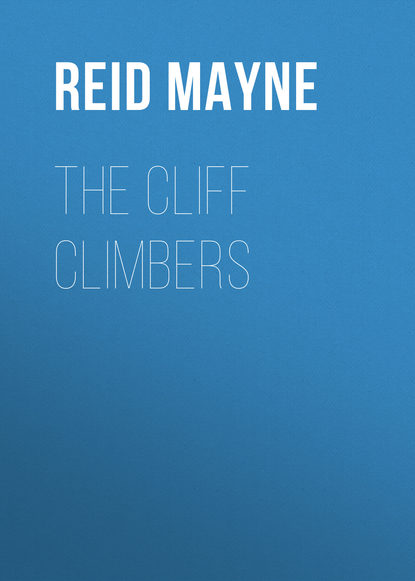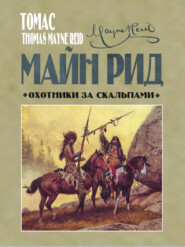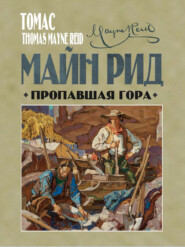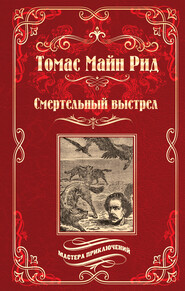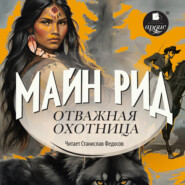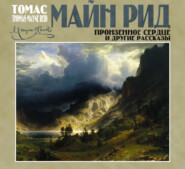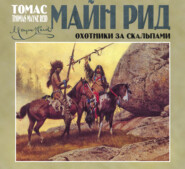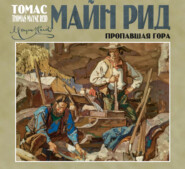По всем вопросам обращайтесь на: info@litportal.ru
(©) 2003-2024.
✖
The Cliff Climbers
Настройки чтения
Размер шрифта
Высота строк
Поля
“‘The male,’ writes this gentleman author, ‘is about the size of the tahir (here he speaks of the other well-known species of Himalayan wild goat, and which is itself much larger than any of the domesticated kinds). Except just after changing their coats, when they are of a greyish hue, the general colour of the ibex is a dirty yellowish brown. I have, however, killed the younger animals, both male and female, with their coats as red as that of a deer in his red coat; but never saw an old male of that colour, for the reason, I imagine, that he lives much higher, and sheds his hair much later in the season. The hair is short, something in texture like that of the burrell and other wild sheep; and in the cold weather is mixed with a very soft downy wool, resembling the shawl-wool of Thibet. This and the old hair is shed in May and June; and in districts occupied by the flocks at that season the bushes and sharp corners of rocks are covered with their cast-off winter coats. The striking appearance of the ibex is chiefly owing to the noble horns: which nature has bestowed upon it. In full-grown animals the horns, which curve gracefully over the shoulders, are from three to four feet in length along the curve, and about eleven inches in circumference at the base. Very few attain a greater length than four feet; but I have heard of their being three inches longer. Their beards, six or eight inches in length, arc of shaggy black hair. The females, light greyish-brown in colour, are hardly a third the size of the males; and their horns are round and tapering, from ten inches to a foot in length. Their appearance upon the whole is clean-made, agile, and graceful.
“‘In the summer they everywhere resort to the highest accessible places where food can be found – often to a part of the country several marches distant from their winter haunts. This migration commences as soon as the snow begins to disappear; and is very gradually performed – the animals receding from hill to hill, and remaining a few days upon each.
“‘At this season the males keep in large flocks, apart from the females; and as many as a hundred may occasionally be seen together. During the heat of the day they rarely move about, but rest and sleep – either on the beds of snow in the ravines, or on the rocks and shingly slopes of the barren hill-sides, above the limits of vegetation. Sometimes, but very rarely, they will lie down on the grassy spots where they have been feeding. Towards evening they begin to move, and proceed to their grazing-grounds – which are often miles away. They set out walking slowly at first; but, if they have any considerable distance before them, soon break into a trot; and sometimes the whole flock will go as hard as they can lay legs to the ground. From what we could gather from the natives, we concluded that they remain in these high regions until the end of October; when they begin to mix with the females, and gradually descend to their winter resorts. The females do not wander so much or so far – many remaining on the same ground throughout the year – and those that do visit the distant hills are generally found lower down than the males, seldom ascending above the limits of vegetation. They bring forth their young in July, having generally two at a birth; though, like other gregarious animals, many are frequently found barren.
“‘The ibex are wary animals, gifted with very sharp sight and an acute sense of smell. They are very easily alarmed, and so wild, that a single shot fired at a flock is often sufficient to drive them away from that particular range of hills they may be upon. Even if not fired at, the appearance of a human being near their haunt is not unfrequently attended with the same result. Of this we had many instances during our rambles after them, and the very first flock of old males we found gave us a proof. They were at the head of the Asrung valley, and we caught sight of them just as they were coming down the hill to feed – a noble flock of nearly a hundred old males. It was late in the day, and we had a long way to return to camp. Prudence whispered, “Let them alone till to-morrow,” but excitement carried the day, and we tried the stalk. Having but little daylight remaining, we may have hurried, and consequently approached them with less caution than we should have done had we had time before us. However it might be, we failed; for long before we got within range, some of them discovered us, and the whole flock decamped without giving us the chance of a shot. Not having fired at, or otherwise disturbed them, more than by approaching the flock, we were in great hopes of finding them the next day; but that and several succeeding ones were passed in a fruitless search. They had entirely forsaken that range of hills.
“‘All readers of natural history are familiar with the wonderful climbing and saltatory powers of the ibex; and, although they cannot (as has been described in print) make a spring and hang on by their horns until they gain footing, yet in reality, for such heavy-looking animals, they get over the most inaccessible-looking places in an almost miraculous manner. Nothing seems to stop them, nor to impede in the least their progress. To see a flock, after being fired at, take a direct line across country, which they often do, over all sorts of seemingly impassable ground; now along the naked face of an almost perpendicular rock, then across a formidable landslip, or an inclined plane of loose stones or sand, which the slightest touch sets in motion both above and below; diving into chasms to which there seems no possible outlet, but instantly reappearing on the opposite side; never deviating in the slightest from their course; and at the same time getting over the ground at the rate of something like fifteen miles an hour, is a sight not easily to be forgotten. There are few animals, if any, that excel the ibex in endurance and agility.’”
Chapter Thirty Four.
A battle of bucks
Karl had scarcely finished speaking, when, as if to illustrate still further the habits of the ibex, a curious incident occurred to the animal upon, which their eyes were fixed.
It ceased to be a solitary individual: for while they were gazing at it another ibex made its appearance upon the cliff, advancing towards the one first seen. The new comer was also a male, as its huge scimitar-shaped horns testified; while in size, as in other respects, it resembled the one already on the rock as much as if they had been brothers. It was not likely they were so. At all events the behaviour of the former evinced anything but a fraternal feeling. On the contrary, it was advancing with a hostile intent, as its attitudes clearly proved. Its muzzle was turned downward and inward, until the bearded chin almost touched its chest; while the tips of its horns, instead of being thrown back upon its shoulders – their usual position when the animal stands erect – were, elevated high in the air. Moreover, its short tail, held upright and jerking about with a quick nervous motion, told that the animal meditated mischief. Even at so great a distance the spectators could perceive this: for the forms of both the ibex were so clearly outlined against the sky, that the slightest motion on the part of either could be perceived with perfect distinctness.
The new comer, when first observed, appeared to be approaching by stealth – as if he intended to play the cowardly assassin, and butt the other over the cliff! Indeed, this was his actual design, as was discovered in the sequel; and had the other only remained for six seconds longer in the attitude in which he had been first seen, his assailant would no doubt have at once succeeded in his treacherous intent.
We are sorry to have to say that he did succeed – though not without a struggle, and the risk of being himself compelled to take that desperate leap which he had designed for his antagonist.
It was probably the voice of Caspar that hindered the immediate execution of this wicked intention; though, alas! it only stayed it for a short time. Caspar, on seeing the treacherous approach, had involuntarily uttered a cry of warning. Though it could not have been understood by the imperilled ibex, it had the effect of startling him from his dreamy attitude, and causing him to look around. In that look he perceived his danger, and quick as thought, took measures to avert it. Suddenly raising himself on his hind-legs, and using them as a pivot, he wheeled about, and then came to the ground on all fours, face to face with his adversary. He showed no sign of any desire to retreat, but seemed to accept the challenge as a matter of course. Indeed, from his position, it would have been impossible for him to have retreated with any chance of safety. The cliff upon which he had been standing, was a sort of promontory projecting beyond the general line of the precipice; and towards the mountain slope above his escape had been already cut off by his challenger. On all other sides of him was the beetling cliff. He had no alternative but fight, or be “knocked over.” It was less a matter of choice than necessity that determined him upon standing his ground.
This determination he had just time to take, and just time to put himself in an attitude of defence, when his antagonist charged towards him. Both animals, at the same instant, uttered a fierce, snorting sound, and rising upon their hind-legs, stood fronting each other like a brace of bipeds. In this movement the spectators recognised the exact mode of combat practised by common goats; for just in the same fashion does the ibex exhibit his prowess. Instead of rushing horizontally, head to head, and pressing each other backwards, as rams do in their contests, the ibex after rearing aloft, come down again, horns foremost, using the weight of their bodies as the propelling power, each endeavouring to crush the other between his massive crest and the earth. Several times in succession did the two combatants repeat their rearings aloft, and the downward strokes of their horns; but it soon became evident, that the one who had been the assailant was also to be the conqueror. He had an advantage in the ground: for the platform which his adversary occupied, and from which he could not escape, was not wide enough to afford room for any violent movements; and the imminent danger of getting a hoof over the cliff, evidently inspired him with fear and constraint. The assailant having plenty of space to move in, was able to “back and fill” at pleasure, now receding foot by foot, then rushing forward, rising erect, and striking down again. Each time he made his onslaught with renewed impetus, derived from the advantage of the ground, as well as the knowledge that if his blow failed, he should only have to repeat it; whereas, on the part of his opponent, the failure of a single stroke, or even of a guard, would almost to a certainty be the prelude to his destruction.
Whether it was that the ibex attacked was the weaker animal of the two, or whether the disadvantage of the ground was against him, it soon became evident that he was no match for his assailant. From the very first, he appeared to act only on the defensive; and in all likelihood, had the road been open to him, he would have turned tail at once, and taken to his heels.
But no opportunity for flight was permitted him at any moment from the beginning of the contest; and none was likely to be given him until it should end. The only chance of escape that appeared, even to him, was to make a grand leap, and clear his adversary, horns and all.
This idea seemed at length to take possession of his brain: for all on a sudden he was keen to forsake his attitude of defence, and bound high into the air – as if to get over his adversary’s horns, and hide himself among the safer snowdrifts of the mountains.
If such was his intent it proved a sad failure. While soaring in the air – all his four feet raised high off the ground – the huge horns of his adversary were impelled with fearful force against his ribs, the stroke tossing him like a shuttlecock clear over the edge of the cliff!
The blow had been delivered so as to project his body with a revolving impetus into the air; and turning round and round, it fell with a heavy concussion into the bottom of the valley; where, after rebounding full six feet from the ground, it fell back again dead as a stone.
It was some seconds before the spectators could recover from surprise at an incident so curious, though it was one that may often be witnessed by those who wander among the wild crags of the Himalayas – where combats between the males of the ibex, the tahir, the burrell or Himalayan wild sheep, and also the rams of the gigantic Ovis ammon, are of common occurrence.
These battles are often fought upon the edge of a beetling precipice – for it is in such places that these four species of animals delight to dwell – and not unfrequently the issue of the contest is such as that witnessed by our adventurers – one of the combatants being “butted” or pushed right over the cliff.
It does not follow that the animal thus put hors de combat is always killed. On the contrary, unless the precipice be one of stupendous height, an ibex, or tahir, or burrell, will get up again after one of those fearful falls; and either run or limp away from the spot – perhaps to recover, and try his luck and strength in some future encounter with the same adversary. One of the most remarkable instances of this kind is related by the intelligent sportsman, Colonel Markham, and by him vouched for as a fact that came under his own observation. We copy his account verbatim: —
“I witnessed one of the most extraordinary feats performed by an old tahir, that I, or any other man, ever beheld. I shot him when about eighty yards overhead upon a ledge of rocks. He fell perpendicularly that distance, and, without touching the ground or the sides of the precipice, rebounded, and fell again about fifteen yards further down. I thought he was knocked to atoms, but he got up and went off; and although we tracked him by his blood to a considerable distance, we were after all unable to find him!”
My young readers may remember that many similar feats have been witnessed in the Rocky Mountains of America, performed by the “bighorn” – a wild sheep that inhabits these mountains, so closely resembling the Ovis ammon of the Himalayas, as to be regarded by some naturalists as belonging to the same species. The hunters of the American wilderness positively assert that the bighorn fearlessly flings himself from high cliffs, alighting on his horns; and, then rebounding into the air like an elastic ball, recovers his feet unhurt, and even unstunned by the tremendous “header!”
No doubt there is a good deal of exaggeration in these “hunter stories;” but it is nevertheless true that most species of wild goats and sheep, as well as several of the rock-loving antelopes – the chamois and klipspringer, for instance – can do some prodigious feats in the leaping line, and such as it is difficult to believe in by any one not accustomed to the habits of these animals. It is not easy to comprehend how Colonel Markham’s tahir could have fallen eighty yards – that is, 240 feet – to say nothing of the supplementary descent of forty-five feet further – without being smashed to “smithereens.” But although we may hesitate to give credence to such an extraordinary statement, it would not be a proper thing to give it a flat contradiction. Who knows whether there may not be in the bones of these animals some elastic principle or quality enabling them to counteract the effects of such great falls? There are many mechanical contrivances of animal life as yet but very imperfectly understood; and it is well-known that Nature has wonderfully adapted her creatures to the haunts and habits for which she has designed them. It may be, then, that these wild goats and sheep – the Blondins and Leotards of the quadruped world – are gifted with certain saltatory powers, and furnished with structural contrivances which are altogether wanting to other animals not requiring them. It would not be right, therefore, without a better knowledge of the principles of animal mechanism, to contradict the statement of such a respectable authority as Colonel Markham – especially since it appears to be made in good faith, and without any motive for exaggeration.
Our adventurers had entered into no discussion of this subject on observing the descent of the ibex. Indeed, there was nothing to suggest such speculations; for the creature had fallen from such an immense height, and come down with “such a thump” upon the hard turf, that it never occurred to any of them to fancy that there was a single gasp of breath left in its body. Nor was there; for on reaching the ground after its rebound, the animal lay with limbs loose and limp, and without sign of motion – evidently a carcass.
Chapter Thirty Five.
The Bearcoots
Our adventurers were congratulating themselves on this unexpected accession to their larder; which, like the manna of old, had, as it were, rained down from the sky.
“Our dinner!” shouted Caspar, gleefully, as the “thump” of the falling ibex sounded in their ears. “Our supper, too,” he added. “Ay, more! In such a large carcass there must be provision to last us for a week!”
All three rose to their feet, and were about starting forward to secure the prize; when a shrill scream twice repeated fell upon their ears – coming down apparently from the top of the cliffs, or rather from the mountain that trended still higher above them.
Could it be the cry of the conquering ibex – his slogan of triumph? No; it was not his voice, nor that of a quadruped of any kind. Neither did the spectators for an instant believe it to be so. On turning their eyes upward, they saw the creature, or the creatures – for there were two of them – from whose throats those screams had proceeded.
The victorious ibex was still standing conspicuously upon the cliff. During the few seconds that the attention of the spectators had been occupied elsewhere, he appeared to have been contemplating the dire deed of destruction he had just accomplished, and perhaps indulging in the triumph he had obtained over his unfortunate rival. At all events he had stepped forward upon the projecting point of the rock – to the very spot so lately occupied by his adversary.
The cry, however, which had been heard in the valley below had reached his ears at the same time, and perhaps a little sooner: for as the spectators looked up, they saw that he had been startled by it, and was looking around him with evident alarm. In the air above and not many yards distant from him, were two dark objects, easily recognisable as birds upon the wing. They were of large size, nearly black in colour, and with that peculiar sharpness of outline and sweep of wing that distinguish the true birds of prey. There was no mistaking their kind – they were eagles – of a species known in the Himalayas and the steppes of Thibet as the “bearcoot.”
They were swooping in short, abrupt curves, at intervals repeating their shrill screams, both crying out together, and from their excited mien, and the character of their movements, no doubt could be entertained as to the object of their noisy demonstrations. They were about to assault an enemy, and that enemy was no other than the ibex.
The animal appeared to be fully aware of their intent; and seemed for a moment to be irresolute as to how it should act. Instead of placing itself in a bold, defiant attitude – such as it had lately assumed towards an antagonist of its own kind – it stood cowering, and apparently paralysed with fear. It was this very effect which the eagles, by their screaming, had designed to produce; and certainly the fierce birds were succeeding to the utmost of their expectations.
The spectators kept their eyes fixed upon the actors of this new drama – watching every movement, both of the birds and the beast, with intense interest. All were desirous of seeing the latter punished for the cruel act he had just committed, and which they regarded as savouring very strongly of fratricide.
It was written in the book of fate that their desire should be gratified, and that the destroyer should himself be destroyed. They were expecting to witness a somewhat prolonged combat; but in this expectation they were disappointed. The duration of the conflict was as brief as the preliminaries that led to it; and these were of the shortest kind: for scarce ten seconds had elapsed, after they had uttered their first scream, before the bearcoots swooped down to the level of the cliff, and commenced a joint attack upon the ibex, striking at him alternately with beak and claws.
For a short time the quadruped was shrouded – almost hidden – under the broad, shadowy wings of the birds; but even when its figure could be traced, it appeared to be making no very energetic efforts at defending itself. The sudden attack made by such strange enemies seemed to have completely disconcerted the ibex; and it remained as if still under the paralysis of fear.
After a moment or two had passed, the ibex appeared to recover self-possession; and then he, rearing up, struck out with his horns. But the bearcoots were on the alert; and each time that the animal attempted a forward movement, they easily avoided the blow by shying to one side or the other; and then quickly wheeling, they would swoop back upon it from behind.
In this way was the conflict progressing, the ibex holding the ground upon which he had been first attacked, turning round and round, with his two fore hoofs held close together, or else rearing aloft on his hind-legs, and using them as a pivot.
It would have been better for the ibex had he kept to his fore-feet altogether; as in that attitude he might have held his ground a little longer – perhaps until he had either beaten off his winged assailants, or wearied them out by a prolonged defence.
But to fight on “all fours” did not chance to be his fashion. It was contrary to the traditions of his family and race – all of whose members, from time immemorial, had been accustomed, when battling with an enemy, to stand erect upon their hind-legs.
Following this fashion, he had raised himself to his full perpendicular, and was about aiming a “butt” against the breast of one of the bearcoots that was tantalising him in front, when the other, that had made a short retrocession in order to gain impetus, came swooping back with the velocity of an arrow, and seizing the ibex under the chin, by a quick, strong jerk of its talons, it struck the head of the animal so far backward that it lost its balance, and went toppling over the cliff. In another instant the ibex was in mid-air – falling – falling – through that same fearful space that had just been traversed by his own victim.
The spectators looked to see him strike the ground without receiving further molestation from his winged assailants. Not so, however, did it result. Just as the ibex had got about half-way down the face of the precipice, the second eagle was seen shooting after him with the velocity of a flash of lightning; and before he could reach the ground, the bearcoot was seen striking him once more, and causing him to diverge from his vertical descent. The body came to the ground at length – but at a considerable distance from where the other was lying – the eagle descending with it to the earth, and even remaining over it with wings and limbs extended, as if still clutching it in his talons!
Why the bearcoot was thus retaining the ibex in his clutch was not quite so clear: for the animal was evidently dead; and apparently had been so long before reaching the earth. There was something strange about this proceeding on the part of the bird – as there had also been in its mode of descent through the last forty or fifty yards of space. From the manner in which it had extended its wings after striking its prey, and from the way in which it still kept exercising them, the spectators began to think that its singular descent, and its remaining over the carcass in that cowering attitude, were neither of them voluntary acts on its part.
The truth was soon made clear – proving the contrary to be the case: for as the bearcoot continued to flap its wings, or rather, flutter them in a violent irregular motion, it became evident that instead of desiring to remain by the fallen body of its victim, it was doing its very best to get away from it! This was all the more easily believed, when it commenced uttering a series of wild screams; not as before indicating rage or menace, but in tones expressive of the greatest terror!
The spectators, who had already risen from their seats, ran towards the spot – surmising that there was something amiss.
On getting close up to the still screaming and fluttering bird, they were able to understand what had appeared so incomprehensible.
They saw that the bearcoot was in a dilemma; that its talons were buried in the body of the ibex, and so firmly fixed, that with all the strength of its sinewy legs, backed by the power of its elastic pinions, it was unable to free itself!
In striking the ibex in his descent, the bird had buried its crooked claws deeply into the soft abdomen of the animal, but in attempting to draw them out again, had found – no doubt to its great chagrin – that the thick coating of “poshm” which covered the skin of the ibex, had become entangled round its shanks; and the more it fluttered to free itself, turning round and round in the effort, the stronger and tighter became the rope which it was twisting out of that celebrated staple – the shawl-wool of Cashmere!





